Hey there, coin enthusiasts! Ever wonder if that old 1940 penny tucked away in your coin jar could be worth more than just one cent? You might be surprised! While most 1940 pennies won’t make you rich, certain rare varieties can be surprisingly valuable. Let’s dive into the fascinating world of 1940 wheat pennies and explore the factors that can make them worth a pretty penny (pun intended!).
What Makes a 1940 Penny Valuable?
Several key factors influence a 1940 penny’s value, transforming it from everyday pocket change into a sought-after collector’s item.
1. Condition: A Penny Saved, A Penny Earned
Just like any antique or collectible, the condition of a 1940 penny plays a crucial role in determining its worth. A penny that’s been in circulation, showing wear and tear from years of use, will be worth less than a pristine, uncirculated penny that’s been carefully preserved.
Collectors use a grading system called the Sheldon Coin Grading Scale to assess a coin’s condition. The scale ranges from 1 to 70, with 70 representing a perfect, flawless coin.
Here’s a general idea of how condition affects a 1940 penny’s value:
| Condition | Description | Estimated Value |
|---|---|---|
| Poor | Heavily worn, details barely visible | A few cents |
| Average | Moderate wear, details still visible | $0.20 – $1 |
| Fine | Minor wear, most details sharp | $1 – $50 |
| Uncirculated (MS+) | No wear from circulation, may have minor flaws | $2.28 – $4.63 or more |
| Proof | Special collector’s coins, mirror-like finish | $51 or more |
2. Mint Marks: Location, Location, Location
Believe it or not, where a 1940 penny was minted can significantly impact its value. During that year, pennies were produced at three different U.S. Mint facilities: Philadelphia, Denver, and San Francisco. Each mint used a unique marking, called a mint mark, on its coins:
- No mint mark: This indicates the penny was minted in Philadelphia.
- “D”: A “D” mint mark signifies the penny was minted in Denver.
- “S”: An “S” mint mark means the penny was minted in San Francisco.
Interestingly, 1940 pennies from the Denver Mint, marked with a “D,” are considerably rarer than those from the other two mints. This scarcity makes them more desirable to collectors and, therefore, more valuable.
3. Errors: Imperfections That Increase Value
Sometimes, mistakes happen during the minting process, and these errors can actually increase a penny’s value substantially! Collectors are always on the lookout for these unique and unusual coins.
Here are some common minting errors that can make a 1940 penny more valuable:
- Double Dies: A double die occurs when a coin is accidentally struck twice with the same die, resulting in a doubled image.
- Off-Center Strikes: If a penny isn’t perfectly centered when struck by the die, the design will appear off-center, making it a sought-after error coin.
- Die Cracks: When a die develops cracks, it can leave behind distinctive raised lines on the coins it strikes, adding to their value.
Why Is a 1940 Penny With a “D” Mint Mark So Valuable?
The 1940-D penny, minted in Denver, stands out for its rarity. It had the lowest mintage of all the 1940 pennies, with only around 213 million produced. This limited production run, combined with the fact that many 1940-D pennies were likely melted down over the years, makes them significantly rarer and more desirable to collectors.
In fact, a 1940-D penny in exceptionally good condition, graded MS-68 Red by PCGS (Professional Coin Grading Service), sold for a remarkable $10,000!
How to Spot a Valuable 1940 Penny
Think you might have a hidden treasure lurking in your coin jar? Here’s what to look for:
- Check for a Mint Mark: Examine the back of the penny for a “D” or “S” mint mark. These often indicate higher value.
- Assess the Condition: Look for signs of wear and tear. A shiny, well-preserved penny is more likely to be valuable.
- Inspect for Errors: Carefully examine the coin for any unusual features, like double images, off-center designs, or raised lines, which could indicate valuable minting errors.
If you believe your 1940 penny might be something special, it’s always a good idea to consult with a reputable coin dealer or numismatist (coin expert) for a professional appraisal.
Selling Your 1940 Penny
If you’ve got a valuable 1940 penny and want to sell it, you have a few options:
- Local Coin Shops: Start by checking with local coin shops in your area. They can often provide appraisals and may be interested in purchasing your coin.
- Online Auction Sites: Online platforms like eBay can be a great way to reach a wider audience of collectors.
- Reputable Coin Dealers: For higher-value coins, consider working with a reputable coin dealer who specializes in rare and valuable coins.
Remember, the value of your 1940 penny ultimately depends on its condition, rarity, and the demand from collectors.
Preserving Your Penny’s Value
Whether you’re a seasoned collector or just starting out, it’s important to properly store and handle your coins to preserve their condition and value:
- Avoid Excessive Handling: The oils and acids on your skin can damage coins over time, so handle them as little as possible.
- Use Protective Sleeves or Albums: Store your coins in acid-free sleeves or albums designed for coin storage.
- Keep Away from Extreme Temperatures and Humidity: Store your collection in a cool, dry place to prevent damage from temperature fluctuations and humidity.
The 1940 Penny: A Window into History
While the value of a 1940 penny can fluctuate, it remains a tangible reminder of American history. Each coin tells a story of its time, from the bustling mints where it was produced to the hands it passed through over the decades. So, the next time you come across a 1940 penny, take a moment to appreciate its history and the possibility that it might just be a small treasure waiting to be rediscovered.
Remember: The information provided in this article is for general knowledge and entertainment purposes only and should not be considered professional financial or numismatic advice. Always consult with a qualified professional before making any decisions related to buying, selling, or investing in coins.
Explore Further
- 80’s New York had a profound effect on the art world.
- Antebellum era gave rise to some of the most significant social and political movements in American history.
- 90s rave fashion was more than just a trend—it was a cultural phenomenon that had a lasting impact on fashion and style.
- Unveiling Bernhard Caesar Einstein’s Scientific Achievements: A Legacy in Engineering - July 15, 2025
- Uncover who is Jerry McSorley: CEO, Family Man, Business Success Story - July 15, 2025
- Discover Bernhard Caesar Einstein’s Scientific Contributions: Unveiling a Legacy Beyond Einstein - July 15, 2025

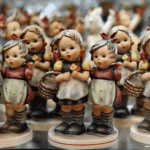
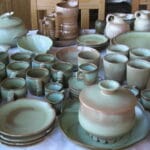

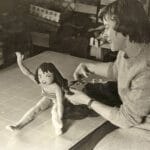
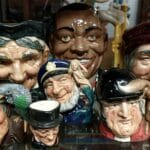
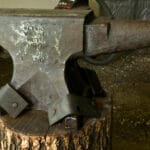









3 thoughts on “1940 Wheat Penny Value: Unveiling Hidden Treasures in Your Coin Jar”
Comments are closed.